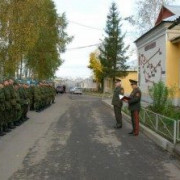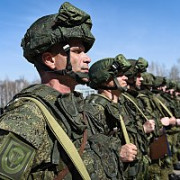105mm gun tank m60
Содержание:
Armaments
Rangefinder
Reduces the error and increases the maximum measurable distance of the rangefinder
Night vision device
Improves visibility by enhancing natural light or active illumination.
Main armament
105 mm M68 cannon
Two-plane stabilizer
Reduces the swing of the gun in two planes while moving
Ammunition63 rounds
First-order37 rounds
Reloadbasic crew → aces
8.7 → 6.7 s
Vertical guidance-10° / 20°
Main article: M68 (105 mm)
| 105 mm M68 | Turret rotation speed (°/s) | Reloading rate (seconds) | |||||||||||
|---|---|---|---|---|---|---|---|---|---|---|---|---|---|
| Mode | Capacity | Vertical | Horizontal | Stabilizer | Stock | Upgraded | Full | Expert | Aced | Stock | Full | Expert | Aced |
| Arcade | 63 | -10°/+20° | ±180° | Two-plane | 21.4 | 29.7 | 36.0 | 39.8 | 42.4 | 8.71 | 7.70 | 7.10 | 6.70 |
| Realistic | 13.4 | 15.8 | 19.1 | 21.1 | 22.5 |
Ammunition
| Penetration statistics | |||||||
|---|---|---|---|---|---|---|---|
| Ammunition | Type ofwarhead | Penetration @ 0° Angle of Attack (mm) | |||||
| 10 m | 100 m | 500 m | 1,000 m | 1,500 m | 2,000 m | ||
| M728 | APDS | 260 | 258 | 250 | 240 | 231 | 222 |
| M393A2 | HESH | 127 | 127 | 127 | 127 | 127 | 127 |
| M456 | HEATFS | 400 | 400 | 400 | 400 | 400 | 400 |
| Shell details | |||||||||
|---|---|---|---|---|---|---|---|---|---|
| Ammunition | Type ofwarhead | Velocity(m/s) | ProjectileMass (kg) | Fuse delay(m) | Fuse sensitivity(mm) | Explosive Mass(TNT equivalent) (g) | Ricochet | ||
| 0% | 50% | 100% | |||||||
| M728 | APDS | 1,426 | 4.65 | N/A | N/A | N/A | 75° | 78° | 80° |
| M393A2 | HESH | 732 | 14.85 | 0.4 | 0.1 | 4,310 | 73° | 77° | 80° |
| M456 | HEATFS | 1,173 | 10.5 | 0.05 | 1 | 1,270 | 65° | 72° | 77° |
| Smoke shell characteristics | ||||||
|---|---|---|---|---|---|---|
| Ammunition | Velocity(m/s) | ProjectileMass (kg) | Screen radius(m) | Screen deploy time(s) | Screen hold time(s) | Explosive Mass(TNT equivalent) (g) |
| M416 | 730 | 11.4 | 20 | 5 | 25 | 50 |
Ammo racks
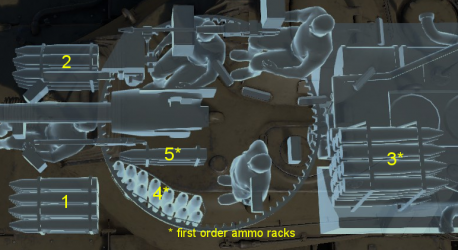
Ammo racks of the M60A1 (AOS)
| Fullammo | 1strack empty | 2ndrack empty | 3rdrack empty | 4thrack empty | 5thrack empty | Visualdiscrepancy |
|---|---|---|---|---|---|---|
| 63 | 49 (+14) | 38 (+25) | 17 (+46) | 4 (+59) | 1 (+60) | No |
Notes:
- As they are modeled by sets of 2, shells disappear from the rack only after you fire both shells in the set.
- Racks 3*, 4* and 5* are first stage ammo racks. They total 37 shells and get filled first when loading up the tank.
- These racks are also emptied early: the rack depletion order at full capacity is: 3 — 4 — 5 — 1 — 2.
- If you pack 17 (+46) shells, it will keep the front hull and the turret rear empty of ammo.
- Simply not firing when the gun is loaded will move ammo from non-essential into ready racks. Firing will interrupt the restocking of the ready racks.
- When refilling from racks 1 and 2, the refill order of ready racks is 5 — 4 — 3.
Machine guns
12.7 mm M85 machine gun
Ammunition900 rounds
Belt capacity200 rounds
Reloadbasic crew → aces
10.4 → 8.0 s
Fire rate626 shots/min
Vertical guidance-9° / 60°
7.62 mm M73 machine gun (coaxial)
Ammunition5 950 rounds
Belt capacity250 rounds
Reloadbasic crew → aces
10.4 → 8.0 s
Fire rate500 shots/min
Main articles: M85 (12.7 mm), M73 (7.62 mm)
| 12.7 mm M85 | ||||
|---|---|---|---|---|
| Mount | Capacity (Belt) | Fire rate | Vertical | Horizontal |
| Pintle | 900 (200) | 625 | -9°/+60° | ±180° |
| 7.62 mm M73 | ||||
|---|---|---|---|---|
| Mount | Capacity (Belt) | Fire rate | Vertical | Horizontal |
| Coaxial | 5,950 (250) | 500 | N/A | N/A |
Operators[]
Current users of the M60 in dark blue, former in cyan.
Egyptian modified version of the M60A3 participates with the Egyptian Army in Operation Bright Star.
Current
- Afghanistan — 13 M60A3 donated by Greece (may receive a further 50 units[citation needed])
- Bosnia and Herzegovina — 45 M60A3
- Bahrain, — 180 M60A3
- Brazil — 91 M60A3 TTS
- Egypt — 2,300 M60A3
- Iran — 150 M60A1
- Israel — 711 Magach 6 Archuv and Magach 6 Archuv 2, 111 Magach 7 (to be increased by 74 before 2010).
- Jordan — 250
- Lebanon — 66 A3 series, first 10 arrived on 22 May 2009
- Morocco — 982 M60A3TTS
- Oman — 73
- Portugal — 100 M (to be retired)
- Saudi Arabia — 450 M60A1 and M60A3
- Spain — 16 M60A3TTS (only the Infantería de Marina)
- Sudan — 20
- Republic of China (Taiwan) — 450 M60A3 TTS
- Thailand — 178 M60A3 Ex-U.S. Army
- Tunisia — 84
- Turkey — 925 M60A3TTS/M60A1 RISE-Passive
- Yemen — 240
Former
- Austria
- Greece Retired from service in June 2009 with some 13 units transferred to Afghanistan while the remainder are to be sold for scrap[citation needed].
- Italy
- United States Not in active service, some in reserve/storage.
- Ethiopia
Тактика игры на M60
В бою мы будем придерживаться стандартов игры на М48А1, но теперь, благодаря повышенной точности можно позиционировать себя как снайпера. Другими словами, для М60 тактика
может предполагать ведения боя на больших дистанциях и позиционирование на второй или даже третьей линии.
Давать активный засвет, как B-C 25t. мы не можем, но вот пассивный свет обеспечиваем отлично. Кроме того, средний урон в 390 единиц у М60 World of Tanks
дает нам возможность отлично работать в паре с советскими средними танками, а отличные УВН позволяют максимально пользоваться рельефом местности, но не стоит забывать про размеры танка, его довольно сложно спрятать за обычной кочкой или небольшим камнем.
The M60A1 (1962)
This was the first major version and mass-production model, characterized by a new “needle nose” turret. The latter was not adopted immediately, and a significant number still fielded the M48A3 turret. It was in service since the spring of 1962. As it was at least two tons heavier, this forced the adoption of a shock absorber on the second roadwheel pair and was also accompanied by a slight relocation of the first return roller.
The Continental engine was now the AVDS-1790-2C, served by the Allison CD-850-6A powershift cross-drive transmission. Other minor internal modifications were made to the hull. Early M60A1s had no gun stabilization system. An AOS or add-on-stabilizer was retrofitted in the early 1970s, enhancing first hit killing rate by keeping the gun close to the aim while on the move.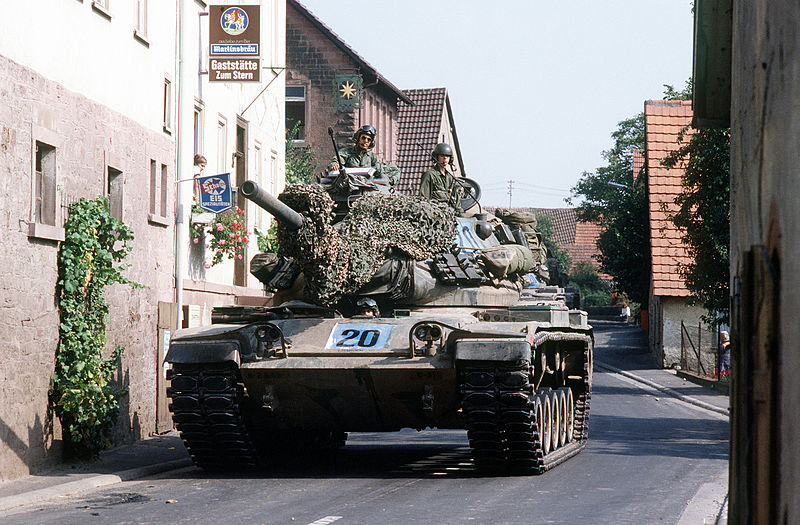
M60A1 in a German village, Operation REFORGER, 1982
Protection was improved (thanks to reports from the 1973 war) with the adoption of add-on chin armor for the turret. In the engine, a new hydraulic fluid prevented the danger of internal fire by lowering the point of ignition. In 1974 and 1975, these tanks were upgraded with RISE (Reliability Improvement of Selected Equipment), consisting in a new engine configuration, and in 1977, the RISE/passive appeared. It consisted in the adoption of passive IR sights for the driver, gunner and commander. The need for a massive IR illuminator above the gun was therefore eliminated. In 1978-79, a battery of two smoke dischargers banks was fitted on either side of the turret. The M60A1 was also retrofitted with the M60A3 T142 tracks with replaceable trackpads. But by the 1980s, after these upgrades, the M60A1 was only distinguished from the M60A3 by its lack of crosswind sensor, armored flap of the TTS and thermal shroud for the main gun. These tanks formed the backbone of the US armored forces until the M1 Abrams became operational. At 58 tons, the late A1 was much heavier than the M60 (50.7 tons), or the early A1 (52-54 tons), thus reducing its mobility.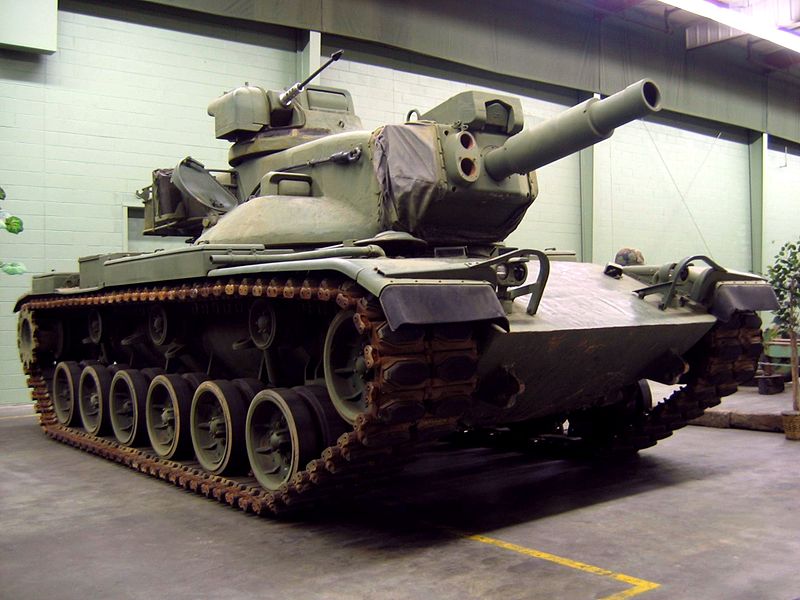 M60A2 “Starship” at the American Armor Foundation
M60A2 “Starship” at the American Armor Foundation
Usage in battles
The M60A3 TTS lacks the mobility to arrive first on the front lines or easily flank, but the unimpressive protection means that advancing steadily in the open is not a safe proposition either. It is best to follow teammates, stay close to cover, and take advantage of the thermal sight to scan for opponents. A quick glance through the gunner’s scope can reveal hidden enemies from afar. The armour and mobility issues are less important if one can consistently catch targets off guard and shoot first, and if the rest of the team is causing a ruckus, all the better. Keep an eye out for flankers and avoid staying out of cover for long.
Thermal sights are very helpful and not quite ubiquitous at the M60A3’s rank, but they are not uncommon either. IFVs like the Begleitpanzer 57, BMP-3, and Type 89 have them and can spot the M60A3 easily. Thankfully, these targets are more reliant on ATGMs for long distance combat, which are easier to avoid than APFSDS rounds. They will still pack a huge punch upon a successful hit, so do not stand still. The premium AMX-30 Super, Leopard A1A1 (L/44), and Type 74G all boast thermal sights and superior mobility, making them difficult targets indeed. The only real way to deal with them is to shoot first. It is also possible for the M60A3 TTS to encounter its cousins in the China tree, the M60A3 TTS (China) and CM11. The former does not have ERA and is even more vulnerable while the latter has even worse mobility in exchange for superior firepower; these three tanks all make easy targets for one another.
The MBT-70 currently shares a battle rating with the M60A3 TTS. They are very different tanks and can cover each other’s weaknesses to some extent when used as a lineup; when high mobility and aggressive pushes are needed, the MBT-70 (or its devolved sibling, the XM-803) can be used, and when thermal sights and firepower are needed the M60A3 can pick up the slack. None of these options have very good armour, but few opponents at their rank do.
Pros and cons
Pros:
- Same ammo selection as the M1 Abrams
- Good quality thermal sight
- ERA offers decent chemical protection
- Has a laser rangefinder
Cons:
- Not very mobile
- Very low hp/t ratio means slower acceleration than competitors
- Large target
- Armour is virtually useless against APFSDS
- ERA coverage has significant gaps
- Turret ring, gun mantlet, and cupola are all notable weak spots
- Stock M456A2 HEATFS, may prove ineffective to vehicles with composite armour or ERA
History
M60A1
Development
In 1960, work was started to upgrade the M60 main battle tank, as the T95 project and the project to create composite armor ended. The prototypes fitted the T95E7 turret on the hull of the M60. In order to increase the room in the turret for the crew the gun used the M140 mount, which moved the gun forward 5 inches. The first two prototypes (Pilot 1 and 2) were ready in May 1961, and the third prototype (Pilot 3) was ready in June 1961. The prototypes were designated as the M60E1, and they were all built by Chrysler Defense. Pilot 1 was tested at Eglin Air Force Base, Pilot 2 was tested at Yuma Test Station, and Pilot 3 was tested at Fort Knox. The M60E1 was accepted for American service on 22 October 1962. The designation for production M60E1 tanks was Tank, Combat, Full Tracked: 105-mm Gun, M60A1. Production began on 13 October 1962, with an order of 720 units by the Army.
Design
Hull
The upper glacis armor of the hull was upgraded from 3.67 inches to 4.29 inches at 65°. The steering wheel was replaced with a T-bar control, and the break and accelerator pedals were rearranged for easier usage by the driver. The tank was upgraded to the Continental AVDS-1790-2A engine and the CD-850-5 cross drive transmission, and it used the T97 track assembly. The first return roller was moved slightly, and shock absorbers were added to the second road wheel pair. The addition of the shock absorbers was due to the increased weight of the armor and new M60A1 turret.
Turret
The main feature of the M60A1 was a new turret, which was the turret of the T95E7 medium tank prototype. The new turret had more armor protection, and it also could had more room for the crew, because of the new M140 gun mount. A fume extractor was added to the rear of the turret bustle, on the left side; this would prevent fumes and smoke from accumulating inside the vehicle when the weapons were fired. The loader and gunner received padded seats, replacing the wire mesh seats which were uncomfortable. Ammunition for the main gun was increased to 63 rounds, with 15 rounds in the turret bustle, several rounds in the turret ring, and the rest stored in the hull. The turret was equipped with a new traversing mechanism, and an AN/VSS-1(V)1 IR searchlight was fitted above the gun mantlet. It received the M19 FCS, which consisted of the M17A1 coincidence rangefinder, M10A1 ballistic drive, and the mechanical M19E1 ballistic computer for the gunner. The M60A1 tank uses the M68E1 105 mm gun. The M68E1 gun shared the same firing characteristics as the M68, but had several design improvements including an updated gun hydraulic configuration, a stabilization upgrade for the gun (but not a full stabilizer), a gun elevation kill switch for the loader, an improved ballistic drive, and other component refinements.
In 1972, the M60A1 (AOS) was introduced, which gave the tank an add-on stabilization (AOS) system. It was a kit that could be applied to M60A1 tanks with very little modification to the hydraulic gun control system. The AOS allows for stabilization of the gun vertically and of the turret horizontally. This allowed the gunner to track targets and control the gun and turret while the vehicle was moving; this increased the hit-on-the-move capability significantly. Before the AOS upgrade the fire-on-the-move accuracy at 2000 meters was practically 0%, whereas with the upgrade 70% accuracy was achieved. The AOS had three modes: power-with-stabilization-on, power-with-stabilization-off, and manual. Power-with-stabilization-on was the mode which stabilized the gun, power-with-stabilization-off allowed the turret to be controlled electrically when the stabilizer was not necessary, and the manual mode allowed the crew to still traverse the turret and elevate the gun if the electrical or hydraulic systems were inoperable.
The M60A3 (1980)
Work on a vastly enhanced version began in 1978, at the same time the M1 Abrams program began. This was chiefly to keep the M60 in operation alongside the much costlier new main battle tank, and to be able to face off the T-64 and T-72. Although the hull and turret remained unchanged for the most, it was easily distinguished by the fitting of two banks of smoke dischargers, an AN/VVG-2 flash-lamp pumped ruby-laser based rangefinder, an M21 ballistic computer and a turret stabilization system. At mid-production, it was also decided to delete the cupola.
This was done for three reasons. Israeli studies on their own M60A1/A3s in combat (IDF tactical doctrine imposed that the commander fight unbuttoned, exposed) showed that a non-penetrating hit on the turret roof, burying itself at the base of the cupola (acting as a shot trap) could dislodge it, instantly killing the commander. In addition, the locking mechanism of the hatch was dangerous to use under fire. The performances of the remote-controlled M85 heavy AA MG as originally intended were even worse than those of the pintle-mount cal.50 (12.7 mm), due to limited elevation. Therefore, late versions are recognized by their low-profile, simpler “Urdan cupola”, and the overall silhouette of the tank was greatly diminished in the process.
M60A3
The service duration of the M60A3 was impressive, spanning two and a half more decades, from 1980 to 2005. This was due to a number of factors, that made it compare well with the much more advanced M1, especially from a cost and maintenance point of view. The infantry telephone on the back plate was still on the M60 but was eliminated on the M1 and later retrofitted with TUSK. Although having lower performance, the M60 engine was much cheaper to maintain, more fuel-efficient and had also a lower temperature. It was, therefore, less dangerous for infantry marching behind.
The floor escape hatch, absent on the M1, was also an added safety feature for the crew, if the tank was turned over or under enemy fire. Indirect fire was also easier on the M60 and allowed a more variety of operations in coordination with infantry. So, in tactical doctrine, the M1/M60 rôles were refined and well distributed. The M1 Abrams was to spearhead the armored assault and deal with enemy tanks, while the M60 was to follow with infantry to clear and sanitize the area, especially in an urban environment. However, both tanks were equally sensitive to IEDs.
105mm Gun Tank M60 links & resources
The 105mm Gun Tank M60 on WikipediaOn Military-factory
105mm Gun Tank M60 equipped with a mine plough on training at the Quantico USMC base.
Обучение экипажа
Машина имеет в составе экипажа четыре человека: командира, наводчика, механика-водителя и заряжающего(радиста).
Стоит уделять особое внимание выбору навыков экипажа, потому что это тот показатель, который сильно влияет на исход игры. Мы предлагаем обучить экипаж в таком порядке:
Мы предлагаем обучить экипаж в таком порядке:
- Командир – «Шестое чувство», «Ремонт», «Боевое братство», «Маскировка»;
- Наводчик – «Ремонт», «Плавный поворот башни», «Боевое братство», «Маскировка»;
- Механик-водитель – «Ремонт», «Плавный ход», «Боевое братство», «Маскировка»;
- Заряжающий(радист) – «Ремонт», «Радиоперехват», «Боевое братство», «Маскировка».
Тактика ведения боя
Выбирая линию ведения боя, стоит выбирать вторую или третью. М60 – идеальный тайный снайпер. Конечно, спрятаться за небольшой неровностью рельефа или камнем не получится из-за габаритов машины, однако встать за кустом и оставаться невидимым для противника вполне возможно.
Другой способ игры на американце – это выступать в качестве пассивного света, просвечивая врага для своих союзников и не участвуя в атаке.
Конечно же, лучшей тактикой игры на любом танке – это умение совмещать разные режимы игры, создавая свой неповторимый стиль. Так, сначала можно просветить врага, а затем уже выступать в качестве невидимого снайпера, простреливая его со второй или, что лучше, с третьей линии, тем самым не давая противнику возможности дотянуться до вас.
Тактика игры на M60
В бою мы будем придерживаться стандартов игры на М48А1, но теперь, благодаря повышенной точности можно позиционировать себя как снайпера. Другими словами, для М60 тактика
может предполагать ведения боя на больших дистанциях и позиционирование на второй или даже третьей линии.
Давать активный засвет, как B-C 25t. мы не можем, но вот пассивный свет обеспечиваем отлично. Кроме того, средний урон в 390 единиц у М60 World of Tanks
дает нам возможность отлично работать в паре с советскими средними танками, а отличные УВН позволяют максимально пользоваться рельефом местности, но не стоит забывать про размеры танка, его довольно сложно спрятать за обычной кочкой или небольшим камнем.
Отличная стабилизация орудия позволяет M60 WoT
играть в «качели» с противниками используя рельеф карты и не принимать снаряды вражеских орудий своей башней, что из-за не самой хорошей стабилизации нам приходилось делать на М48А5.
К сожалению, прожектор на башне не дает нам дополнительных метров к обзору, но и не является материальной частью танка, а значит стреляя в него, урон нам не нанесут. Американский средний танк М60
очень страдает от прямых попаданий артиллерии, при попадании снаряда в борт, мы гарантированно теряем примерно одну тысячу прочности, а при попадании в корму не исключена вероятность прохождения полного урона, а именно двух тысяч очков прочности. Этого достаточно, чтобы отправить наш танк в ангар. Если же «чемодан» попадает вам в лоб, то остается надеется только на ВБР.
Подводя итог, можно сказать, что М60 танк
лучше всего чувствует себя на 3-ей линии. Мы либо стоим в кустах и играем в «невидимого снайпера», либо занимаем позицию для пассивного засвета и исключаем свою возможность нанесения урона по врагу.
Самым оптимальным решением является комбинирование этих стилей, к примеру, в начале боя M60 WoT
может занять позицию и обнаружить противника, чтобы стреляла наша команда, а затем дождаться подхода союзников на 1-ую линию атаки и уже аккуратно расстреливать врага или продвигаться вперед с поддержкой команды, но оставаясь слегка позади.
References[]
Notes
- ↑ Foss, p. 166
- Hunnicutt[page needed]
- Hunnicutt p. 165
- Hunnicutt pp. 6, 408
- Hunnicutt p. 157
- Hunnicutt/Firepower p. 181
- ↑ «M60 Patton Main Battle Tank (USA)». Historyofwar.org. http://www.historyofwar.org/articles/weapons_m60patton.html. Retrieved 2010-03-26.
- ↑ «Development and History of the M-60 tank». Patton Mania. http://www.patton-mania.com/M60_Patton/m60_patton.html.
- Development and History of the M-60 tank
- The Gulf War with the 401TFW/614TFS Lucky Devils
- Turkish Defence Industry Products M60 T
- M60 Tank Modernization Project
- Jane’s Defence Weekly — June 06, 2007
- «Projects — Phoenix M60 Upgrade». KADDB. http://www.kaddb.com/static/project2.shtm. Retrieved 2010-03-26.
- Army Equipment — Brazil
- John Pike (2009-02-13). «Iranian Ground Forces Equipment». Globalsecurity.org. http://www.globalsecurity.org/military/world/iran/ground-equipment.htm. Retrieved 2010-03-26.
- Army Equipment — Israel
- «واشنطن تزوّد لبنان أسلحة ثقيلة قبل استحقاق حزيران» (in Arabic). Annahar Newspaper. April 9, 2009. http://www.lebanese-forces.com/ar/artde.asp?newsid=43196. Retrieved 2009-04-09.
- «Heavy U.S. Military Aid to Lebanon Arrives ahead of Elections». Naharnet Newsdesk. April 9, 2009. http://www.naharnet.com/domino/tn/NewsDesk.nsf/Lebanon/C4E6544B51A01293C2257593001BCF28?OpenDocument. Retrieved 2009-04-09.
- Army Equipment — Taiwan
Bibliography
- Foss, Chris (2005). Jane’s armour and artillery : 2005-2006. Jane’s Information Group. ISBN .
- Hunnicutt, R. P. (1984). Patton: A History of the American Main Battle Tank. Volume 1. Novato: Presidio Press. ISBN .
General info
Survivability and armour
Smoke grenades
Creation of a smoke screen in front of the vehicle
Armourfront / side / back
Hull108 / 70 / 25
Turret230 / 49 / 57
Crew4 people
Visibility152 %
Armour type:
- Cast homogeneous armour — The main armour of the turret and hull.
- Rolled homogeneous armour — Engine deck and engine compartment rear, additional armour panels (upper and lower glacis).
- Structural steel — Slat armour, fenders, storage boxes.
- Gun steel — All gun barrels.
- Composite screens — Side skirts.
| Armour | Front (Slope angle) | Sides | Rear | Roof |
|---|---|---|---|---|
| Hull | 108 mm (65°) Upper Glacis 137 mm (52°) Lower Glacis 117 mm (55°) Lower Glacis (Bottom) 114 mm Turret Ring Guard | 36 — 70 mm Sides 50.8 mm Turret Ring Guard | 25 mm Engine Compartment Rear 40 mm Rear 28 mm Lower Rear 50.8 mm Turret Ring Guard | 36 mm Driver’s Compartment 20 mm Engine Deck |
| Turret | 230.9 mm Front Sides 76.2 mm Below and Above Mantlet 127 mm Gun Mantlet (Inner) 50.8 mm Gun Mantlet (Outer) | 53.8 — 230.9 mm Right Side 49.8 — 215.9 mm Left Side | 57 mm Turret Bustle Rear 25.4 mm Lower Rear and Bustle Underside | 48 mm Front 25.4 mm Rear |
| Cupola | 35 mm (Various Angles) Front 35 mm (Various Angles) Mantlet | 26 mm | 26 mm | 30 mm |
| Additional Armour | 6.35 mm Turret Front (Around Mantlet) 25 mm Upper and Lower Glacis | 65 mm Composite Screens Side skirts 10 mm Slat Armour Turret Sides 6.35 mm Front and Rear Track Guards | 10 mm Slat Armour Turret Rear | 25.4 mm Autocannon Platform |
Notes:
- The additional armour does not cover the entire face of the surface it is located on
- All Suspension Parts — 20 mm
- Tracks — 30 mm
- Turret Ring — 50.4 mm
- Fenders — 4 mm
- Storage boxes (4 mm) are mounted on top of the fenders
Mobility
Speedforward / back
AB65 / 16 km/h
RB and SB58 / 15 km/h
Number of gears6 forward
2 back
Weight54.5 t
Engine power
AB2 290 hp
RB and SB1 200 hp
Power-to-weight ratio
AB42.0 hp/t
RB and SB22.0 hp/t
| Game Mode | Max Speed (km/h) | Weight (tons) | Engine power (horsepower) | Power-to-weight ratio (hp/ton) | |||
|---|---|---|---|---|---|---|---|
| Forward | Reverse | Stock | Upgraded | Stock | Upgraded | ||
| Arcade | 65 | 16 | 54.5 | 1,860 | 2290 | 34.13 | 42.02 |
| Realistic | 58 | 15 | 1,061 | 1200 | 19.47 | 22.02 |
Modifications and economy
Repair costBasic → Reference
AB2 280 → 3 392
RB5 200 → 7 737
SB3 420 → 5 088
Total cost of modifications266 500
455 000
Talisman cost2 800
Crew training260 000
Experts930 000
Aces2 100
Research Aces1 080 000
Reward for battleAB / RB / SB
90 / 150 / 190 %
232 / 232 / 232 %
Modifications
| Mobility | Protection | Firepower | ||||||||||||||||||||||||
|---|---|---|---|---|---|---|---|---|---|---|---|---|---|---|---|---|---|---|---|---|---|---|---|---|---|---|
|
|
|
External links
Paste links to sources and external resources, such as:
- topic on the official game forum;
- other literature.
| Chrysler Defense | |
|---|---|
| MBTs | M48 Patton · M60 · M60A1 (AOS) · M60A2 · M60A1 RISE (P) · M60A3 TTS · XM-1 (Chrysler) · M1 Abrams |
| Note | Chrysler Defense was purchased by General Dynamics Land Systems (GDLS) in 1982. |
| USA medium tanks | |
|---|---|
| Early projects | M2 |
| M3 | M3 Lee · ▃Grant I |
| M4 | M4 · Calliope · M4A1 · M4A1 (76) W · M4A2 · M4A2 (76) W · M4A3 (76) W · M4A3 (105) · M4A5 |
| M26 | T20 · T25 · M26 · M26 T99 · M26E1 |
| Post-war | M46 · M46 «Tiger» · M47 · M48A1 · T54E1 · T95E1 |
| MBT | M60 · M60A1 (AOS) · M60A1 RISE (P) · M60A2 · M60A3 TTS · MBT-70 · XM-803 |
| XM-1 (Chrysler) · XM-1 (GM) · M1 Abrams · IPM1 · M1A1 Abrams · M1A1 HC · M1A2 Abrams | |
| Israeli | Magach 3 · Merkava Mk.1 · Merkava Mk.2B · Merkava Mk.3D |
| Turkey | M60 AMBT |
История создания танка M60
Основной боевой танк M60 — первый танк этого типа в армии США. Его разработка началась в 1957 году фирмой «Крайслер», в противовес советскому среднему танку Т-54, и была дальнейшим развитием конструкции танка M48 «Паттон III». Работы были закончены довольно быстро — уже в марте 1959 года M60 (прототипы назывались ХМ60) прошел ходовые испытания, и получил наименование 105 mm Gun Full Tracked Combat Tank M60.
Серийное производство M60 велось на заводе Detroit Tank Plant с 1960 по 1987 год, всего за это время было изготовлено 15221 машин, правда включая как собственно танки, так и инженерные машины на том же шасси. Кроме США производством основного танка M60 занималась итальянская фирма ОТО Melara, выпустившая 200 танков М60А1.
С начала 1960-х и до конца 1970-х г.г., танк M60 стал основной боевой машиной армии США, однако участия в боевых действиях со стороны США, почти не принимал. На Вьетнамскую войну его по каким-то причинам не отправляли, а к началу операции «Буря в пустыне», M60 уже порядочно устарел, и несколько десятков использовавшихся против Ирака танков этого типа, использовались скорее в роли вспомогательных. Единственное действительно «боевое» применение M60 в американской армии — это вторжение США на Гренаду в 1983 году, но и тут M60 использовались в очень малых количествах.

Чертеж американского основного танка M60
Уже к началу 1980-х г.г., танки типа M60 не удовлетворяли армейское командование, к тому же на вооружение были приняты более совершенные основные танки M1 «Абрамс», поэтому понемногу их стали выводить в резерв, а затем и вовсе сняли с вооружения. Тем не менее, машина оставила о себе память как надежный, сравнительно не сложный в ремонте и техобслуживании танк, способный действовать без существенных доработок в самых различных климатических условиях.
В разные годы, танки M60 состояли на вооружении: Афганистана, Бахрейна, Боснии и Герцеговины, Бразилии, Греции, Египта, Израиля, Италии, Иордании, Ирана, Испании, Йемена, Ливана, Марокко, Омана, Португалии, Саудовской Аравии, США, Таиланда, Тайваня, Туниса и Турции.
В некоторых из перечисленных государств, модификации M60 несут службу и поныне.

Танк M60, вид сбоку
О танке
Американский М60 танк
является уникальным, а значит на него можно пересаживать экипаж с любого американского среднего танка без штрафа и иметь дополнительный опыт экипажу по итогам любого боя, в общем все как у премиум техники, только без дополнительного фарма кредитов.
Смотря на М60 в WoT
, можно с легкостью разглядеть старого доброго Паттона, визуальные отличия заключаются в том, что М60 имеет прожектор на башне и немного измененную форму корпуса. Мы надеемся, что в будущем ему заменят башню и у нас в игре будет уже М60А1. Отличий в ТТХ также немного и они не могут сделать изМ60 новый танк, а лишь делают улучшенный аналог, но обо всем по порядку.

